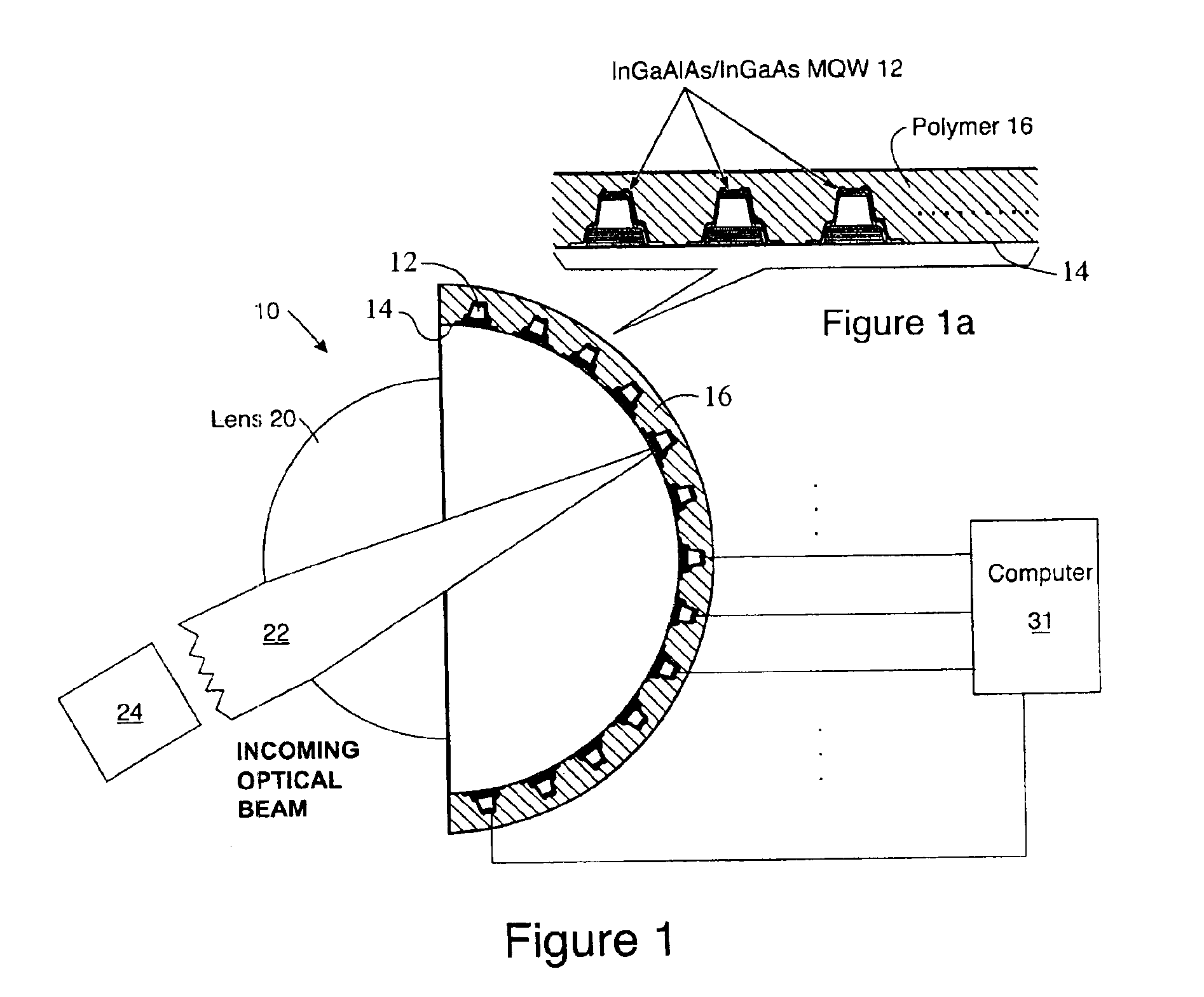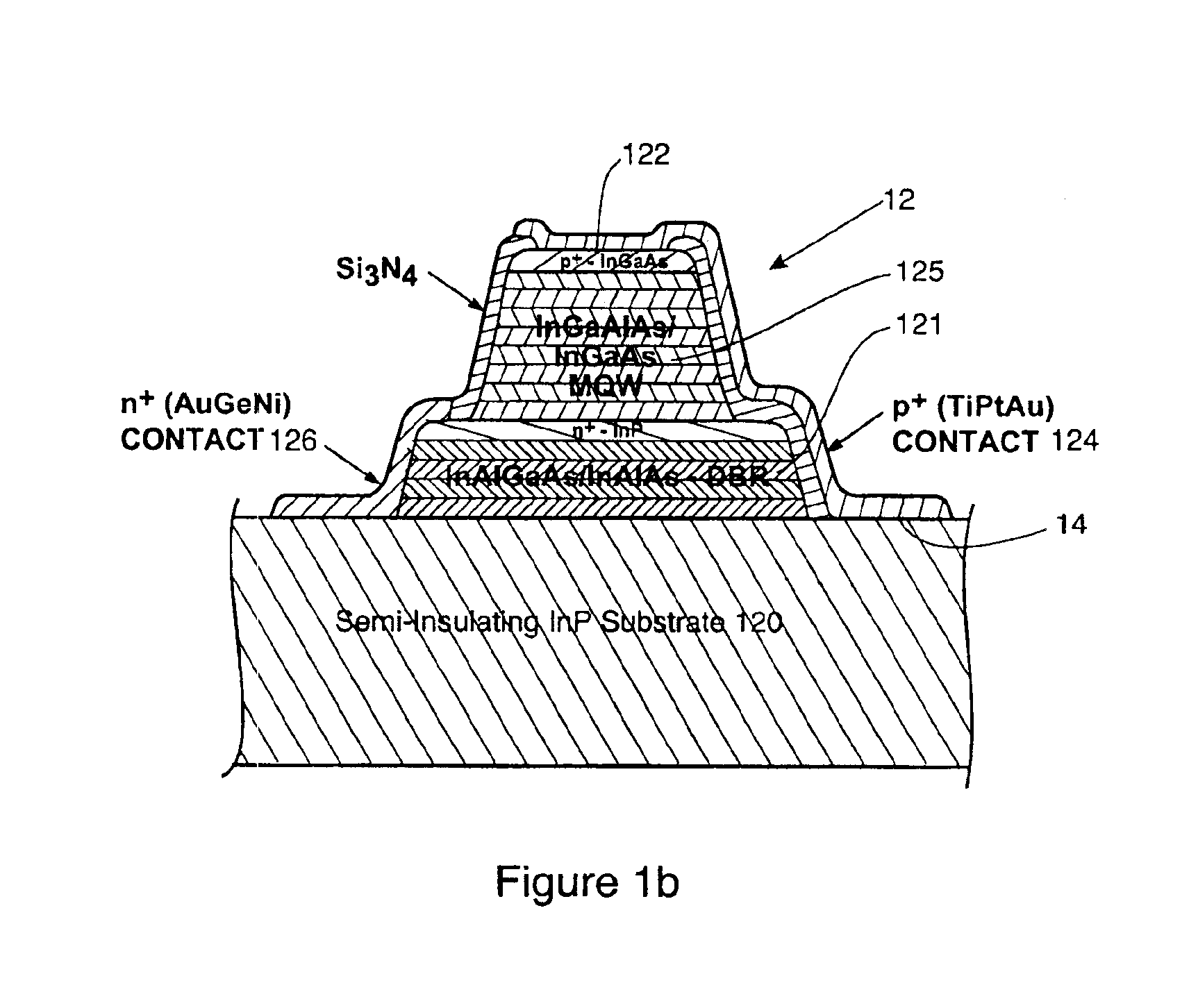Conformal retro-modulator optical devices
a retro-modulator and optical device technology, applied in the direction of reradiation control devices, instruments, etc., can solve the problems of limiting the ability to retrofit existing large, curved surfaces, and dramatic limitations in the depth of modulation (optical contrast ratio) described in the prior art, and achieve high bandwidth, high efficiency, and high bandwidth communication
- Summary
- Abstract
- Description
- Claims
- Application Information
AI Technical Summary
Benefits of technology
Problems solved by technology
Method used
Image
Examples
Embodiment Construction
A Conformal Modulated-Retro-Reflective Optical Device
[0044]FIG. 1 is sectional view through an embodiment of a conformal retro-modulator reflective optical device 10. The device 10 has an array of modulator / detector pixels 12 disposed along a surface 14. An optical arrangement 20 (such as a lens) focuses an incoming optical beam 22 on one or more of the pixels 12 in the array. In this embodiment, the surface 14 conforms to a hemispherical shape. As will be seen, the surface 14 may be of any desired shape, including planar, but the optical arrangement 20 does need to be able to deliver incoming light 22 to selected pixels 12. In FIG. 1 the optical arrangement 20 is depicted as a single lens and a single lens can often suitably focus the beam on a geometric surface like the hemispherical surface 14 shown in FIG. 1. Other optical arrangements 20 may be utilized, including Fresnel lenses, holographic “lenses”, diffractive optical gratings, computer-controlled phase plates, multiple lens...
PUM
 Login to View More
Login to View More Abstract
Description
Claims
Application Information
 Login to View More
Login to View More - R&D
- Intellectual Property
- Life Sciences
- Materials
- Tech Scout
- Unparalleled Data Quality
- Higher Quality Content
- 60% Fewer Hallucinations
Browse by: Latest US Patents, China's latest patents, Technical Efficacy Thesaurus, Application Domain, Technology Topic, Popular Technical Reports.
© 2025 PatSnap. All rights reserved.Legal|Privacy policy|Modern Slavery Act Transparency Statement|Sitemap|About US| Contact US: help@patsnap.com



